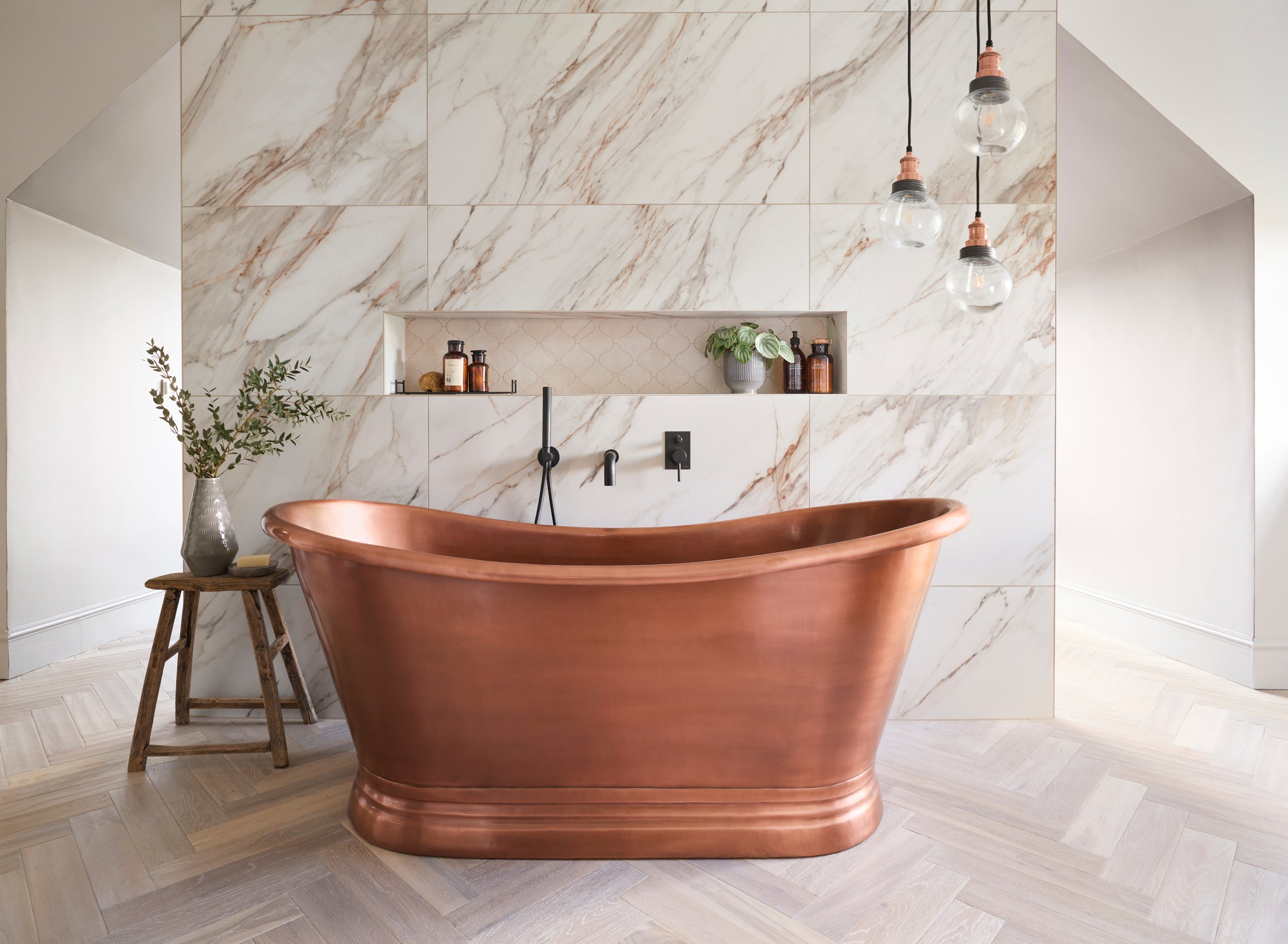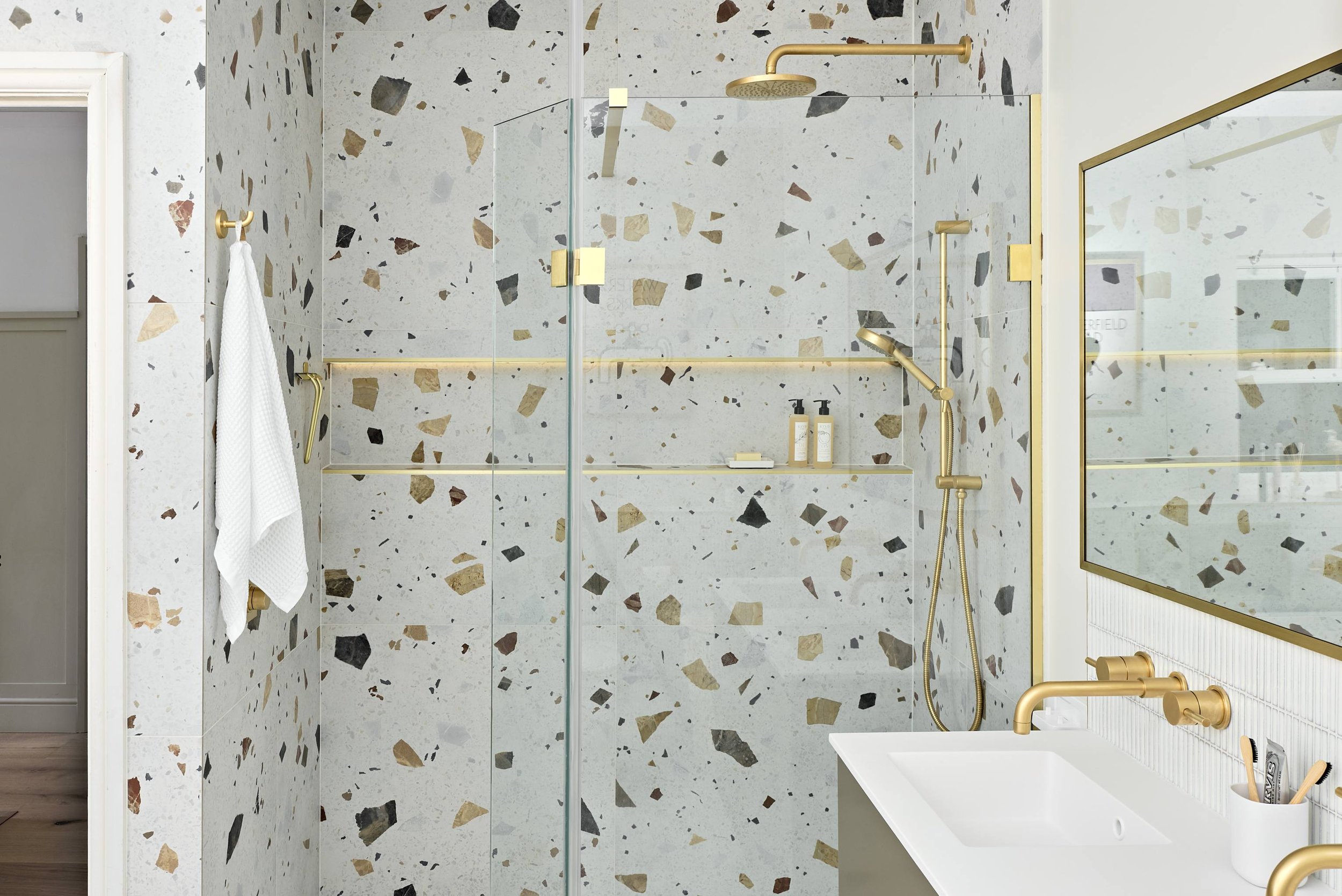Designer advice: How to care for your tiles
You’ve taken the time to choose the perfect tile to add personality to your bathroom. But have you thought about how to care for them? Here, Senior Designer Dena, from Ripples Harpenden, gives her tips for how keep your tiles glistening for many years to come.
Investing in tiles
Tiles are an effective practical and decorative bathroom feature, but with so many types and materials to choose from, it can be tricky to know how to look after them. Our daily lives and routines can be tough on our bathrooms, without us even realising it. Excess water, beauty products, and general wear and tear all contribute to dirt and marks impacting the look and longevity of your tiles. However, ongoing maintenance can be simple to implement and will keep your tiles looking lovely for longer.
What not to do
To keep your tiles looking flawless, we strongly advise against using harsh chemicals and cleaners such as bleach and vinegar. Aggressive solutions will harm the finish of your tiles and weaken the grout that holds them together. This will also happen if you attempt to use an abrasive brush, causing irreversible scratches and shortening the lifespan of your tiles.
Tiles are made to withstand water, however we still advise trying to keep water pooling to a minimum. In time, this excess water can lead to mould growth, causing damage to the grout, which once again leads to a shorter life span and the need to replace your tiles more regularly.
What to do
Each style of tile requires its own cleaning method, depending on its material make-up. Here’s what to do to keep your tiles looking lustrious for longer…
Porcelain
Porcelain is incredibly durable and the lowest maintenance of the group. This is often why porcelain is such a popular choice when it comes to bathrooms.
• Regular dusting – make sure that before you start your cleaning regime, you’ve removed all the loose dirt from the surface of your tiles. Try using a microfibre cloth.
• Prepare a cleaning solution – all you’ll need for this solution is a mild detergent and warm water. Try opting for something ph-neutral, for an extra soft solution. We would also recommend testing this solution in a small area before applying it to the whole floor or walls.
• It’s cleaning time - for floors, dip a soft mop into the pre-made solution and wring out well. When mopping the tiles, make sure that the floor is damp rather than soaking wet. For wall tiles, use a soft sponge or cloth and with the solution, wipe down the whole surface.
• Rinse and dry - after you’ve cleaned your selected areas, rinse well with fresh water, to make sure there is no soap residue left. Wipe down again with a clean and dry microfibre cloth to prevent water marks from forming on the surface of your tiles.
Ceramic
Ceramic tiles can add an extra touch of elegance to your bathroom, however, they require an extra soft touch when caring for them.
• As previously mentioned, dust the tiles with a soft brush to ensure that all loose dirt is removed.
• There are specialised ceramic tile cleaners out there that you can use to save yourself from making your own solution. However, if you would rather make your own, create a similar mixture as suggested for porcelain tiles, with warm water and a mild pH-neutral detergent. Make sure to check the ratios on the bottle as mixing this incorrectly could damage the ceramic glaze.
• Once you’ve cleaned the tiles with the solution, clean again with cfresh water and wipe dry with a clean, soft cloth.
Glass
Glass tiles can be used to create an interesting and captivating look in various areas of the bathroom. They’re particularly special for catching and reflecting light, so ensuring that these tiles are kept clean allows them to always look their best.
Grab your micro-fibre cloth again and remove any loose dirt. Using a microfibre cloth is especially important to maintain their glistening appearance.
For this cleaning solution, mix a few drops of mild dish soap or gentle glass cleaner with warm water. With a soft cloth, lightly wipe the tiles, ensuring you apply minimal pressure.
Rinse the tiles thoroughly with fresh water and wipe down with a clean lint-free cloth, this makes sure that your tiles look brand new every day.
Grout
Another important thing to consider when cleaning your tiles is to look after the grout that keeps them all together. This has a slightly more intricate cleaning method but is equally as important to the upkeep of your tiles.
• The first step is the same as before - make sure that you have cleared the area of any loose dirt. You don’t want any particles spreading when you clean.
• For the grout solution, mix equal parts warm water with white wine vinegar. Alternatively, find yourself a pre-made grout cleaner. Before cleaning a large area, test your solution somewhere discreet to check for discolouration.
• Using a soft-bristle brush, or even an old toothbrush, apply the solution to the grout, allowing it to sit for a few minutes but not long enough for it to dry. After a couple of minutes, lightly scrub the grout with the brush.
• Rinse the cleaned area with fresh water and wipe dry with a clean microfibre cloth.
• Another step you can add to this routine (but is also completely optional) is to apply a grout sealer once the area is completely dry. This will protect it from further damage.
These simple but effective maintenance tips will keep help protect the longevity of your tiles and keep them gleaming for many years to come.







